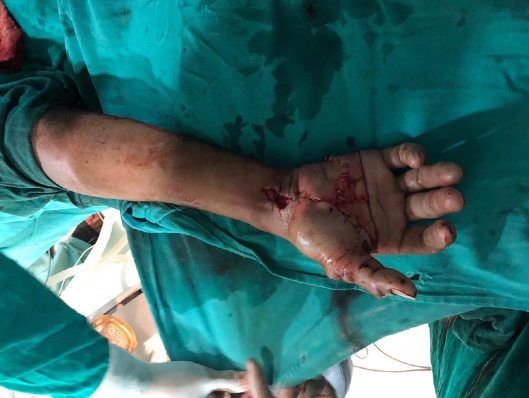Reimplantation in plastic surgery refers to the surgical procedure of reattaching or restoring a body part, typically a severed or traumatically amputated body part, back to its original location on the patient’s body. This complex and specialized surgical technique is also known as replantation.
Key points about reimplantation in plastic surgery include:
Indications:
- Reimplantation is indicated when a body part, such as a finger, hand, arm, ear, or other extremity, has been completely or partially severed due to traumatic injury, accidents, or other causes.
Timing:
- The success of reimplantation is highly dependent on the timing of the procedure. Reimplantation is most successful when performed as soon as possible after the amputation, ideally within hours of the injury.
Procedure:
- The procedure involves carefully reattaching blood vessels, nerves, tendons, and other structures in the severed body part to the corresponding structures in the recipient area. Microsurgical techniques, including the use of microscopes and specialized instruments, are often employed.
Microsurgery:
- Reimplantation is a form of microsurgery, as it involves working with very small structures. Surgeons use microscopes and fine instruments to suture blood vessels and other tissues, ensuring proper alignment and blood flow.
Recovery and Rehabilitation:
- After successful reimplantation, patients undergo a period of recovery and rehabilitation. Physical therapy and rehabilitation are essential to restore function and improve the chances of a successful outcome.
Success Rates:
- The success of reimplantation depends on various factors, including the type of injury, the condition of the severed body part, the patient’s overall health, and the skill of the surgical team. Success rates are generally higher for injuries that are promptly addressed.
Follow-Up Care:
- Close monitoring and follow-up care are essential after reimplantation. This may involve regular check-ups, imaging studies, and ongoing rehabilitation to optimize the functional and aesthetic outcomes.
Reimplantation is a highly specialized and technically demanding procedure, often requiring a team of skilled surgeons, including plastic surgeons, microsurgeons, and orthopedic surgeons. The success of the procedure can significantly impact the patient’s quality of life by restoring function and appearance to the affected body part. Patients who experience traumatic amputations should seek emergency medical attention as quickly as possible to increase the likelihood of successful reimplantation.
